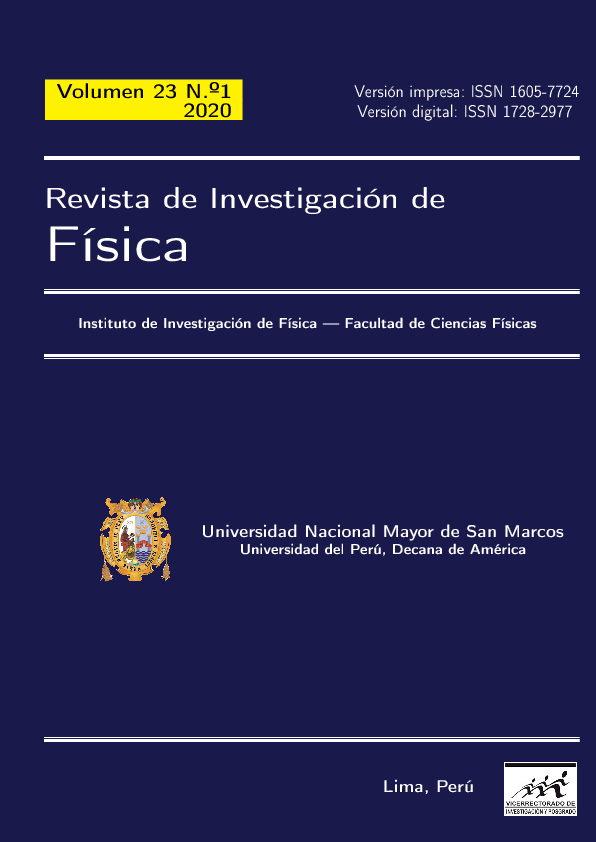El proceso de ruptura de la fuente del terremoto de Ecuador 2016 (7.8 Mw)
DOI:
https://doi.org/10.15381/rif.v23i1.20282Palabras clave:
Terremoto de Ecuador, inversión sísmica, mecanismo focalResumen
El terremoto de Ecuador de 2016 (7.8 Mw), forma parte de la secuencia de grandes sismos en Ecuador y Colombia: 1906 (8.4 a 8.8 Mw), 1942 (7.8 Mw), 1958 (7.7 Mw), 1979 (8.2 Mw), todos con un mecanismo focal del tipo de falla inversa. En esta investigación se ha obtenido la distribución de la fuente sísmica (que indica la presencia de 2 asperezas principales) a partir de inversión de señales telesísmicas, así como los parámetros del proceso de ruptura sísmica: mecanismo focal que indica un tipo de falla inversa (strike=25° , dip=12° , rake=118°) para una profundidad focal de 23 km y la función temporal de la fuente sísmica que indica un evento compuesto con una duración del proceso de ruptura de alrededor de 70 s, asumiendo una velocidad de ruptura promedio de 3.0 km/s. El momento sísmico calculado fue de 5.74 x 10 20 Nm, lo que equivale a una magnitud de 7.8 Mw. La aspereza más pequeña se localiza alrededor del epicentro y la aspereza principal se ubica al sur-este del epicentro en mar y en continente con una dislocación (slip) máxima de 3.8 m. En este caso, el patrón de deformación cosísmica vertical no favorece la generación de un tsunami grande.
Descargas
Publicado
Número
Sección
Licencia
Derechos de autor 2020 César Jimenéz Tintaya, Miguel Saavedra Juan De Dios, Daniel Olcese Huerta, Nick Moreno

Esta obra está bajo una licencia internacional Creative Commons Atribución-NoComercial-CompartirIgual 4.0.
LOS AUTORES RETIENEN SUS DERECHOS:
a. Los autores retienen sus derechos de marca y patente, y tambien sobre cualquier proceso o procedimiento descrito en el artículo.
b. Los autores retienen el derecho de compartir, copiar, distribuir, ejecutar y comunicar públicamente el articulo publicado en la Revista de Investigación de Física (por ejemplo, colocarlo en un repositorio institucional o publicarlo en un libro), con un reconocimiento de su publicación inicial en la Revista de Investigación de Física.
c. Los autores retienen el derecho a hacer una posterior publicación de su trabajo, de utilizar el artículo o cualquier parte de aquel (por ejemplo: una compilación de sus trabajos, notas para conferencias, tesis, o para un libro), siempre que indiquen la fuente de publicación (autores del trabajo, revista, volumen, numero y fecha).






